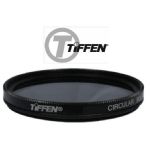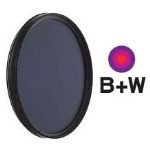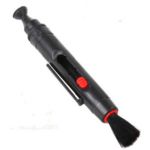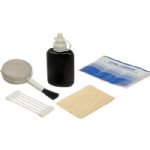Produce impressive shots with this Sony 10-18mm f/4 E-mount lens. This lightweight Sony E-mount lens makes it simple to get extreme wide-angle stills from any compatible camera so that you can show even more of your surroundings. Use it for landscapes, particularly for sweeping vistas, or show off how large crowds are at your favorite events. This lens also includes a consistent f/4 aperture throughout the zoom range so that you can keep lighting constant when you're taking video. It also includes built-in optical SteadyShot image stabilization that automatically adjusts for shake and vibrations, keeping you shooting for longer, even when the light falls.
When you want to shoot video or stills with extremely smooth backgrounds, set the circular aperture in this Sony wide-angle lens to f/4. This creates creamy bokeh that ensures your subject stands out. In addition, the circular aperture means that highlights are circular rather than sharp polygons, adding to the smooth look. The integrated distance encoder also helps with lighting with flashes, providing high-precision telemetry when using this Sony 10-18mm f/4 E-mount lens.
Features:
- Circular Aperture
When changing your aperture to defocus the background, the light sources appear blurred. This 'bokeh' effect of the blurred background can be enhanced with circular aperture blades used in this lens. Conventional aperture blades have flat sides creating unappealing polygonal shaped defocussed points of light. á lenses overcome this problem through a unique design that keeps the aperture almost perfectly circular from its wide-open setting to when it is closed by 2 stops. Smoother, more natural defocusing can be obtained as a result. - Aspherical lens elements
Aspherical lens design dramatically reduces spherical aberration while also reducing lens size and weight. Spherical aberration is a slight misalignment of the light rays projected on the image plane. This is caused by differences in refraction at different points on conventional spherical lenses which degrade image quality in large-aperture lenses. Specially shaped "aspherical" elements near the diaphragm restore alignment of light rays at the image plane, maintaining high sharpness and contrast even at maximum aperture and can also be used at other points in the optical path to reduce distortion. Well-designed aspherical elements can reduce the total number of elements required in the lens, thus reducing overall size and weight. Advanced Aspherical (AA) elements are an evolved variant, featuring an extremely high thickness ratio between the center and periphery. AA elements are exceedingly difficult to produce, relying on the most advanced molding technology to consistently and precisely achieve the required shape and surface accuracy, resulting in significantly improved image accuracy and quality. - ED (Extra-low Dispersion) glass
As focal lengths get longer, lenses built with conventional optical glass have difficulties with chromatic aberration, and as a result images suffer from lower contrast, lower color quality, and lower resolution. ED glass dramatically reduces chromatic aberration at telephoto ranges, and provides superior contrast across the entire image, even at large aperture settings. Super ED glass provides enhanced compensation for chromatic aberration. - Lens-based optical image stabilization
Gyro sensors built into the lens detect even the slightest movement, and the stabilization lens is precisely shifted to counteract any image blur that might occur. The use of precision, quiet linear motors and technology inherited from high-end Sony professional camcorders results in exceptionally quiet, effective image stabilization that contributes to high-quality movies as well as stills. - Distance encoder
The distance encoder plays an integral part in ADI flash metering, which delivers high precision flash metering that is unaffected by the reflectance of subjects or backgrounds. The distance encoder is a lens component that directly detects the position of the focusing mechanism, and sends a signal to the CPU in order to measure distance to the subject. During flash photography, this data is very useful in calculating how much flash output is appropriate to the scene. - Internal focusing
Only the middle groups of the optical system move to achieve focus, so the overall length of the lens does not change. Other important benefits include fast autofocusing and a short minimum focusing distance. Also, the filter thread at the front of the lens does not rotate, which is convenient if you're using a polarizing filter.










































